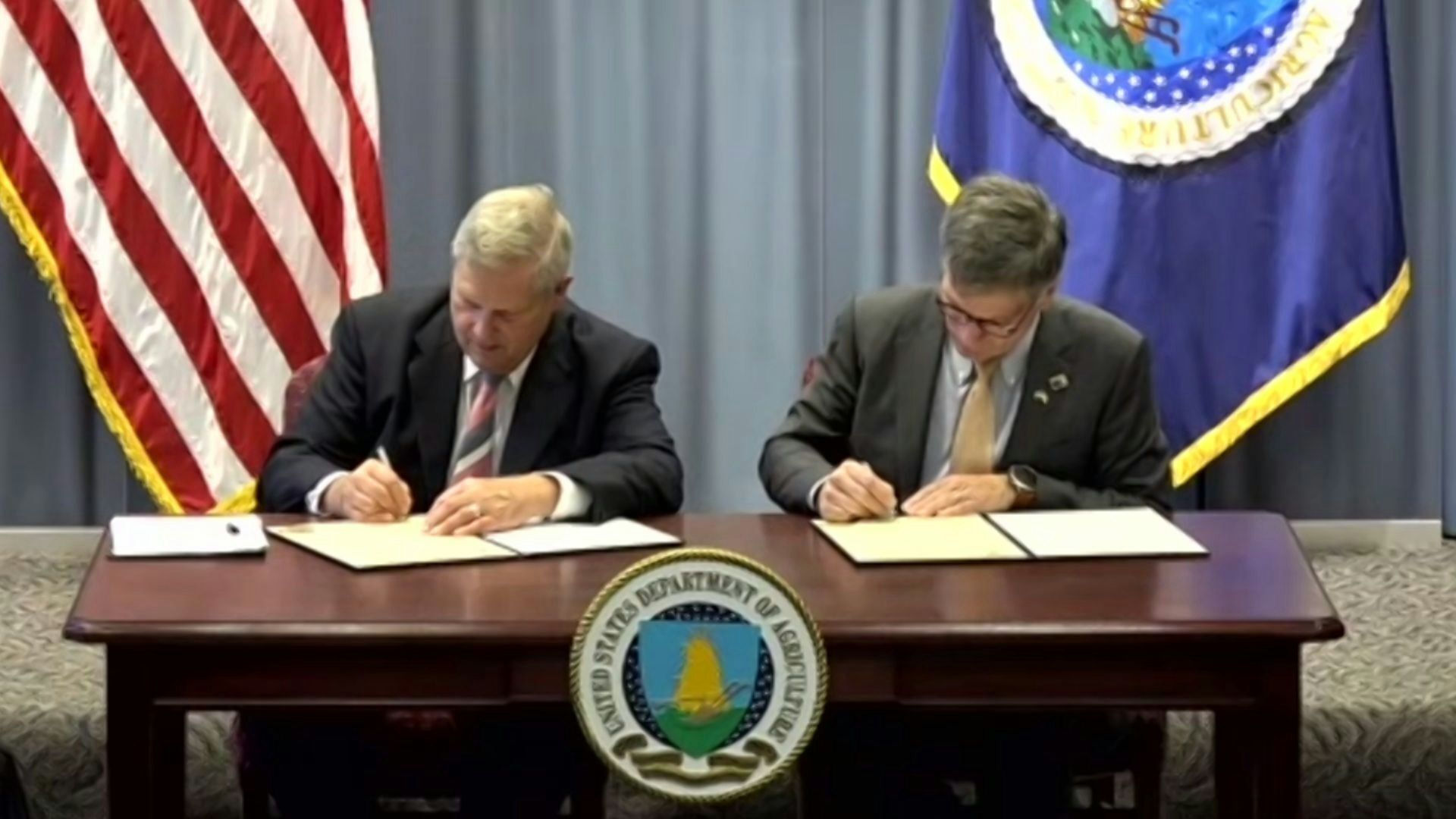In an effort to reward landowners for their ongoing conservation of grazing lands, the federal government and state of Wyoming on Monday finalized an agreement that would allow agricultural producers and landowners to more easily access money to ensure Wyoming’s wide open spaces stay that way.
Gov. Mark Gordon traveled to Washington, D.C., to sign the memorandum of understanding alongside U.S. Agriculture Secretary Tom Vilsack. The partnership between the state and U.S. Department of Agriculture will create a new package of investments in key conservation programs for fiscal year 2023, and will streamline application processes for agricultural producers.
“Wyoming is an ‘and’ state,” said Gordon. “We believe in wildlife and energy development. We believe in wildlife, energy development and ranching operations.”
A Million Acres a Year Lost
In the continental United States, one of every three acres are grasslands, with 90% located in the West, according to the USDA. However, 1 million acres of grasslands are lost each year to make way for subdivisions and farmlands.
Because grasslands are the backbone of the beef industry, and also support rural communities and benefit wildlife, the preservation of those regions are of utmost importance, Gordon said.
“Private property rights are essential in that they are key to making sure that we have abundant wildlife populations, good management of private lands, and benefit wildlife, and that’s something that we are recognizing today,” he said.
“Big game species like elk, mule deer and others migrate twice each year up and down over 200 miles across some of the great Western landscapes,” said Vilsack. “And if you follow those migration routes, you’re going to see that they quickly end up outside of the national parks; outside of wilderness and other public lands.
“They end up oftentimes on vast areas of private land, many of which many of those acres owned and stewarded by families who have owned them and farmed them for generations as productive agricultural land.”
Rewarding Ranchers
Th memorandum signed by Vilsack and Gordon is a voluntary effort that rewards ranchers for maintaining the practices that they have for hundreds of years, Gordon said.
“The management that farmers and ranchers have done on their private lands and on their public lands is key to making sure that we have abundant wildlife going forward,” he said. “This MOU sets in motion a program to help ranchers and farmers do what they have done, and be recognized for it.”
“It is fair to say the private working lands play a vital role in connecting the patchwork of public lands that make America such a special place, especially the western parts of our country,” added Vilsack.
Streamlined Application Processes
As part of the agreement signed by Vilsack and Gordon, beginning this fall the USDA will offer producers a package of programs they can choose from to meet their operations’ needs. Those include the Environmental Quality Incentives Program, Agricultural Conservation Easement Program and Grassland Conservation Reserve Program.
In 2023, USDA’s Natural Resources Conservation Service plans to invest $6 million in additional EQIP assistance and $10 million through ACEP.
For more information, landowners can contact USDA through a local USDA Service Center. On farmers.gov, landowners can create a secure account, apply for NRCS programs, electronically sign documents and manage their conservation contracts.





